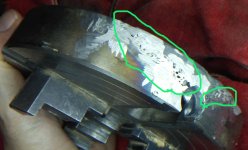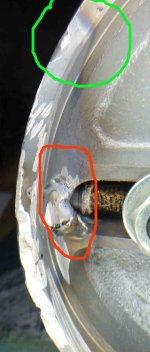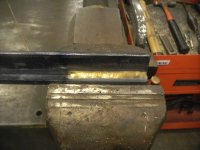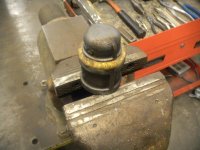MountainBuck
Silver Member
The chuck on my wood lathe spun off and hit the ground cracking it.
I decided to try and tig weld it. I used my Klutch DC tig welder at about 60 amps. The weld looked really good after but then I decided to grind it to make it smooth again. This uncovered the porosity. I realized that it is a cast piece and I should have heated it before trying to weld it. I did add filler metal.
Here is a picture of how it looks now. The porosity where the crack was is circled in green. I did hear it cracking after finishing one of the welds.
So where do I go from here? Should I use it? Can I fix it? Should I trash it?
Thanks in advance!

I decided to try and tig weld it. I used my Klutch DC tig welder at about 60 amps. The weld looked really good after but then I decided to grind it to make it smooth again. This uncovered the porosity. I realized that it is a cast piece and I should have heated it before trying to weld it. I did add filler metal.
Here is a picture of how it looks now. The porosity where the crack was is circled in green. I did hear it cracking after finishing one of the welds.
So where do I go from here? Should I use it? Can I fix it? Should I trash it?
Thanks in advance!



